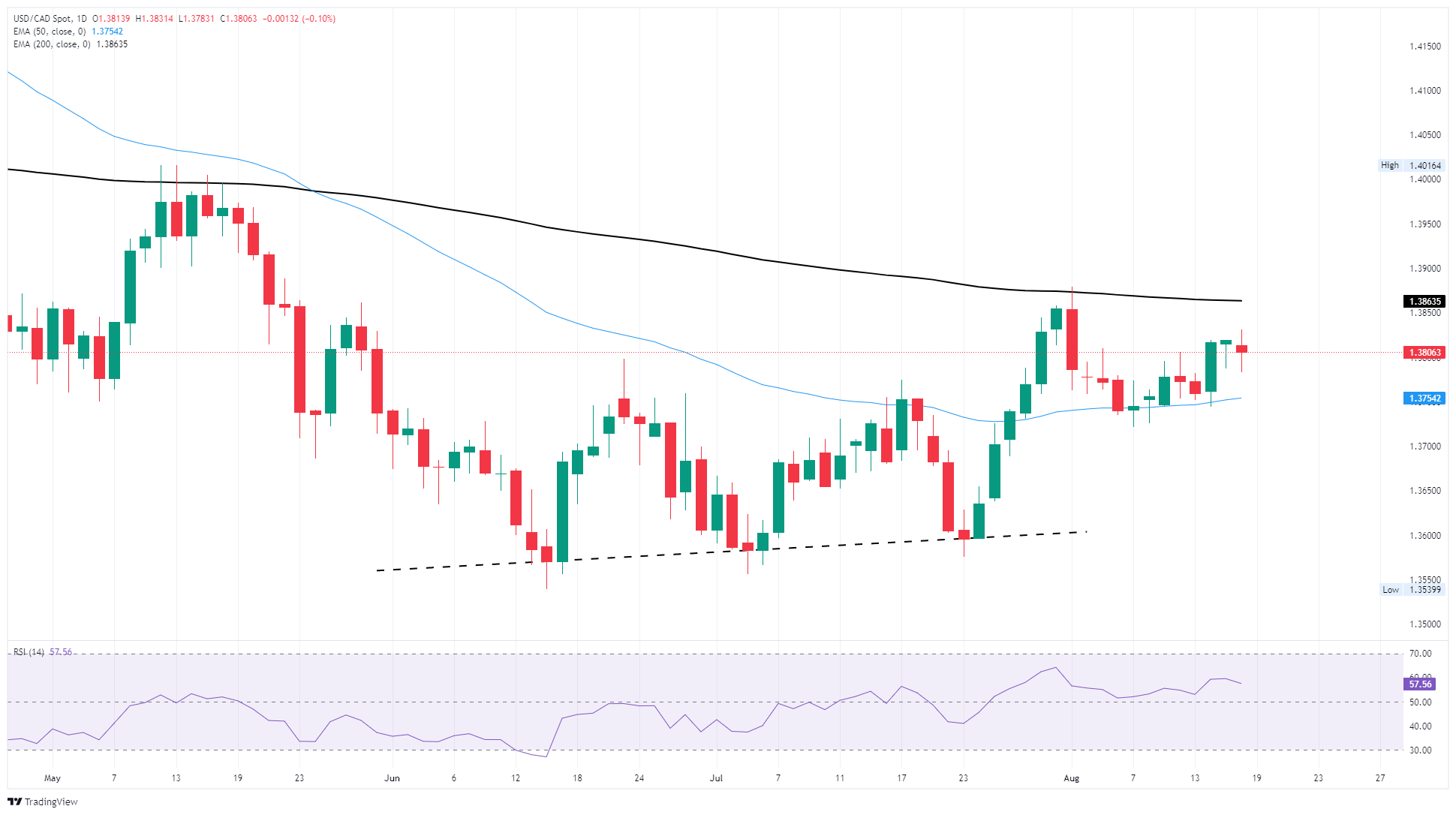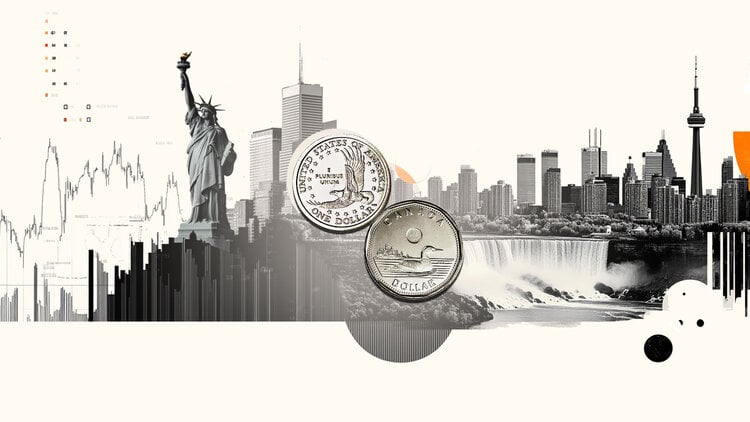- The Canadian Dollar went nowhere fast on Monday.
- The latest round of inflation figures from Canada are due early this week.
- Central bank policy will take center stage later this week as Jackson Hole gets underway.
The Canadian Dollar (CAD) treaded water on Monday, kicking off the new trading week with a notable lack of momentum as investors take a breather from last week’s inflation-fueled excitement. United States (US) inflation pressures appear to be back on the rise, sparking US Dollar (USD) flows as markets adjust their rate cut expectations in real-time.
The latest round of Canadian inflation data will be released on Tuesday. Markets are expecting a slight cool-off in annualized inflation figures, but near-term monthly data is expected to have accelerated in July. This week’s key datapoint will be the latest Jackson Hole Economic Symposium, hosted by the Federal Reserve (Fed) Bank of Kansas. Jackson Hole will kick off on Thursday.
Daily digest market movers: Canadian Dollar spins in place as traders await signals
- The Canadian Dollar is holding in place against the US Dollar to start the week after facing slight losses in the face of safe-haven flows into the USD.
- USD/CAD is churning chart paper near 1.3800 as the Loonie struggles to find its feet, however, losses remain contained for the time being.
- Canadian Consumer Price Index (CPI) inflation for July will be published on Tuesday. Median market forecasts expect headline inflation to tick down to 1.7% YoY but rise to 0.4% MoM.
- The Bank of Canada’s (BoC) core inflation gauge last clocked in at 2.7% YoY.
- The Jackson Hole Economic Symposium kicks off on Thursday, but the headliner will be Fed Chair Jerome Powell’s speech on Friday.
Canadian Dollar price forecast
The Canadian Dollar is stuck in an uneasy middling pattern against the US Dollar this week, with the USD/CAD pair hamstrung near the 1.3800 handle. The Dollar-Loonie pairing is currently trapped in technical congestion between the 200-day and 50-day Exponential Moving Averages (EMA) near 1.3850 and 1.3755, respectively.
USD/CAD daily chart

Canadian Dollar FAQs
The key factors driving the Canadian Dollar (CAD) are the level of interest rates set by the Bank of Canada (BoC), the price of Oil, Canada’s largest export, the health of its economy, inflation and the Trade Balance, which is the difference between the value of Canada’s exports versus its imports. Other factors include market sentiment – whether investors are taking on more risky assets (risk-on) or seeking safe-havens (risk-off) – with risk-on being CAD-positive. As its largest trading partner, the health of the US economy is also a key factor influencing the Canadian Dollar.
The Bank of Canada (BoC) has a significant influence on the Canadian Dollar by setting the level of interest rates that banks can lend to one another. This influences the level of interest rates for everyone. The main goal of the BoC is to maintain inflation at 1-3% by adjusting interest rates up or down. Relatively higher interest rates tend to be positive for the CAD. The Bank of Canada can also use quantitative easing and tightening to influence credit conditions, with the former CAD-negative and the latter CAD-positive.
The price of Oil is a key factor impacting the value of the Canadian Dollar. Petroleum is Canada’s biggest export, so Oil price tends to have an immediate impact on the CAD value. Generally, if Oil price rises CAD also goes up, as aggregate demand for the currency increases. The opposite is the case if the price of Oil falls. Higher Oil prices also tend to result in a greater likelihood of a positive Trade Balance, which is also supportive of the CAD.
While inflation had always traditionally been thought of as a negative factor for a currency since it lowers the value of money, the opposite has actually been the case in modern times with the relaxation of cross-border capital controls. Higher inflation tends to lead central banks to put up interest rates which attracts more capital inflows from global investors seeking a lucrative place to keep their money. This increases demand for the local currency, which in Canada’s case is the Canadian Dollar.
Macroeconomic data releases gauge the health of the economy and can have an impact on the Canadian Dollar. Indicators such as GDP, Manufacturing and Services PMIs, employment, and consumer sentiment surveys can all influence the direction of the CAD. A strong economy is good for the Canadian Dollar. Not only does it attract more foreign investment but it may encourage the Bank of Canada to put up interest rates, leading to a stronger currency. If economic data is weak, however, the CAD is likely to fall.

